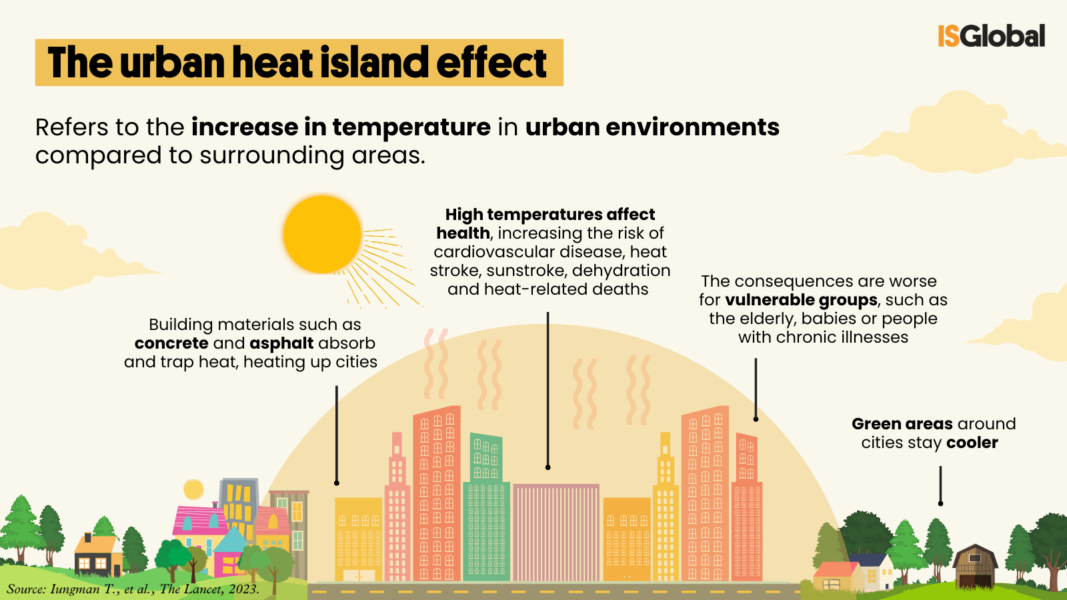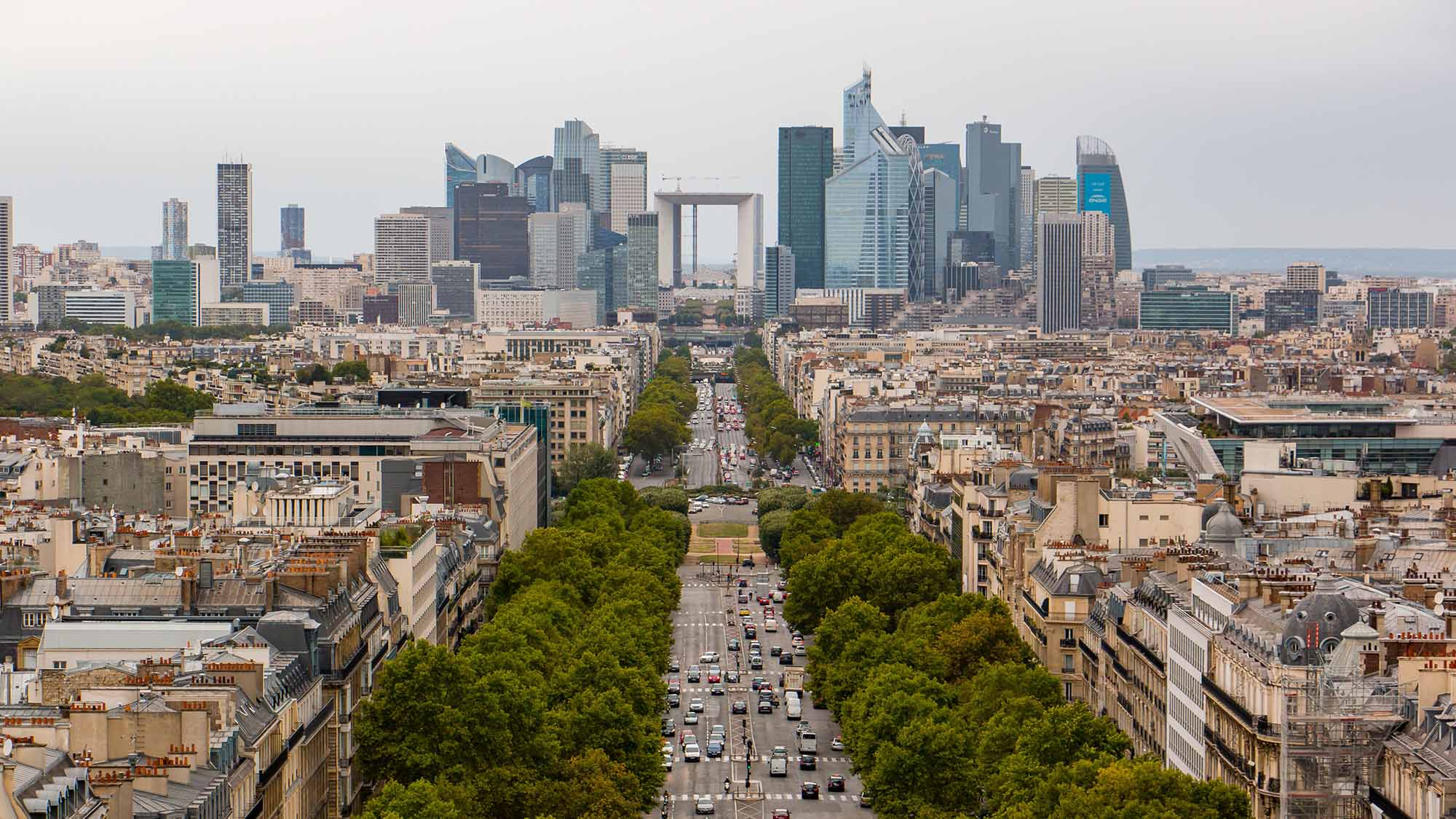The increase in temperature of urban areas with respect to their surrounding areas is known as an ‘urban heat island‘. This phenomenon is mainly caused by a lack of green spaces, high population density, an excess of impermeable surfaces such as asphalt, which absorb and trap heat, and an excess of motorised vehicles.
A recent study by the Barcelona Institute for Global Health (ISGlobal) shows that urban heat islands increase summer mortality by 4%. And if cities were to cover 30% of their space with green areas, 2,664 premature deaths could be avoided in Europe. We spoke with Tamara Iungman, first author of the study and pre-doctoral researcher in the Air Pollution, Urban Planning, Environment and Health group at ISGlobal.

How has your study been conducted?
We assessed the impact of heat on human health during the summer months in a total of 93 European cities, comprising more than 57 million people. Using data from the summer of 2015 including tree cover, daily temperatures and mortality rates, we estimated changes in population health in two hypothetical scenarios:
- A city with no heat island effect
- A city with an increase by 30% of tree cover, with a consequent decrease in local temperature. To do this we have carried out a simple, city-specific model in which we first estimated the reduction in surface temperature as a function of tree cover and evapotranspiration, and then estimated the reduction in air temperature as a function of surface temperature and latitude.
What is the percentage of tree cover in Europe today, and how does it benefit us?
The average tree cover of the 93 European cities studied is 14.9%. But we have observed that there is a large variability between them, ranging from 2.1% to 34.6%. As for the Spanish cities included in the study, in general, they have a low tree cover. On average they have 8.5%, with a range from 2.1% in Alicante to 15.8% in Malaga. From Catalonia, we have only included Barcelona, which has 8.4% tree cover.
The benefits of urban green infrastructure on the population’s health are many: improved perceived health, improved mental health, lower rates of hypertension, of cardiovascular disease, of ADHD and of diabetes and the promotion of physical activity, among others.
There are multiple benefits of urban green infrastructure. That is why we must distribute them equitably and thus avoid environmental injustices.
And inside cities, how are trees usually distributed?
We have observed that in all cities there is a lot of spatial variability in the presence of trees and that in densely populated areas, tree cover is lower. In this sense, it is very important not only to consider the total coverage but also the equitable distribution throughout the city so that the entire population can benefit from trees. This is why we have proposed that the 30% tree cover should be at a very high resolution grid level of 250m x 250m wherever possible, and thus avoid any potential environmental injustice.
What other measures can be taken to cool cities down?
Other actions that should be combined with tree planting are the introduction of green roofs and walls; the replacement of impermeable surfaces such as asphalt with more permeable materials or, ideally, vegetation; the use of lighter colours in buildings; and the promotion of reduced motorised traffic.
All these measures together contribute to creating smarter, more sustainable and climate change resilient cities; lowering local temperatures and air pollution, reducing energy consumption, enhancing other ecosystem functions of trees and vegetation such as water regulation, promoting biodiversity and protecting soil erosion.
Cities are complex systems, and to address their challenges we need to put people at the centre of urban design.
What should cities do to improve this situation?
With our study we have generated evidence that facilitates and promotes decision-making in this area. In addition, we encourage each city to adapt objectives and strategies according to their local conditions using our proposal as a guide.
I believe that there are many cities that have already started to take action, such as Barcelona with the Superilles and Green Axes, Paris with the 15-minute cities or London with the Low-traffic-neighbourhoods among others. These local initiatives have already demonstrated benefits, so it is time to continue to deepen and improve these models and deploy them throughout the city. In this way, the entire population can benefit from them. Clearly, cities are complex systems and to address their challenges we need systemic and holistic approaches that put people at the centre of urban design.
Iungman T, Cirach M, Marando F., Pereira-Barboza E., Khomenko S., Masselot P., Quijal-Zamorano M., Mueller N., Gasparrini A., Urquiza J., Heri M., Thondoo M., Nieuwenhuijsen M. Cooling cities through urban green infrastructure: a health impact assessment of European cities. The Lancet, published online January 31, 2023 2023. doi.org/10.1016/S0140-6736(22)02585-5







